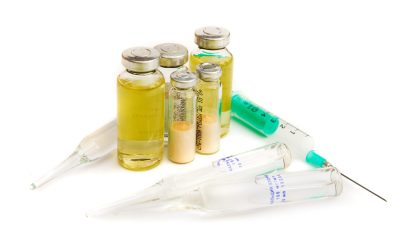Failure to assess risks can lead to accidents, fines and imprisonment (which cannot be insured for), claims for compensation, bad publicity and the sheer personal trauma of being responsible for a death or injury.
If more than five people are employed at the veterinary practice, risk assessments must be recorded in writing. No one size fits all. An obvious example: some vets never attend farm animals or work off-site, but others do.
While help may be sought from external advisers, the legal responsibility always remains with the practice owner. So, veterinary practices should not rely on a pre-prepared pack of paperwork alone.
A responsible person at each veterinary practice should become familiar with the requirements of health and safety law and, as a first step to discharging the legal “safety duty”, that person should carry out risk assessments.
While help may be sought from external advisers, the legal responsibility always remains with the practice owner
A risk assessment will:
- Identify the hazard(s) that could be encountered in the particular work
- Assess risk of harm presented by the hazard
- Identify what needs to be done to control the risk
A hazard is anything that may cause harm, such as unpredictable animals, chemicals, operating machinery and so on.
The risk is the chance, high or low, that somebody could be harmed by the identified hazard, together with a calculation of how serious the harm could be.
Control means elimination or at least minimisation of risk.
Some hazards are obvious, such as those posed by dangerous chemicals or veterinary medicines. Most practices will have already considered those substances and have procedures in place to keep everyone safe. If not, the RCVS Practice Standards Scheme contains a lot of helpful information.
An agricultural veterinary practice should assess the risk of its staff encountering vehicles and machinery off-site
Some hazards may be less immediately apparent. For example, tragically, the agricultural industry still has the highest rate of work-related fatalities of any industry in the United Kingdom. One might expect this to be explained by exposure to unpredictable animals. In fact, almost half of agricultural deaths in the year to April 2021 were caused by moving vehicles or machinery as opposed to less than a quarter of deaths which involved animals. So, clearly, an agricultural veterinary practice should assess the risk of its staff encountering vehicles and machinery off-site.
Some of the most tragic incidents ever have resulted from a confluence of circumstances. So, another key point to remember when preparing risk assessments is to consider the risk of not just hazards A or B but the combined hazard of A plus B. For example, inadequately trained staff reacting poorly to a mechanical failure clearly increases the risk presented by a malfunctioning machine.
The hazards encountered in veterinary practice are many and varied. So, a practice is likely to end up with a number of risk assessments rather than one “catch-all” document. It may be useful to file all risk assessments in one place. But the important thing is not simply to leave them there. Risk assessments should also be reviewed regularly, picking up on any changes in working practices or making changes to reflect newly identified risks.
Risk assessments should also be reviewed regularly, picking up on any changes in working practices or making changes to reflect newly identified risks
If risk assessments are the first step to compliance with health and safety law, the journey continues by combining health and safety with the smooth running of the business of a veterinary practice. Once a risk assessment has been completed, it must be brought to the attention of staff and adhered to in real life. This is achieved by staff training, updates and the attitude displayed by senior management. The manager that ignores a tripping hazard in the reception area sends a message to another worker that risks off-site can be ignored too. But risks to staff off-site may be even greater than those within the confines of the veterinary premises.
Senior management must prioritise health and safety for the good of the practice but also to discharge their own personal obligations imposed by health and safety law. The fact that a veterinary practice is set up as a limited company offers no protection to the director or manager who condones, ignores or simply fails to spot unsafe working methods. Such a person can be prosecuted, fined, jailed and prevented from working as a vet alongside a company.
In short, if you can imagine an accident happening, you have identified a risk. Once you take all reasonably practicable steps to remove or reduce that risk as much as you can, you are on your way to running a safe veterinary practice.









